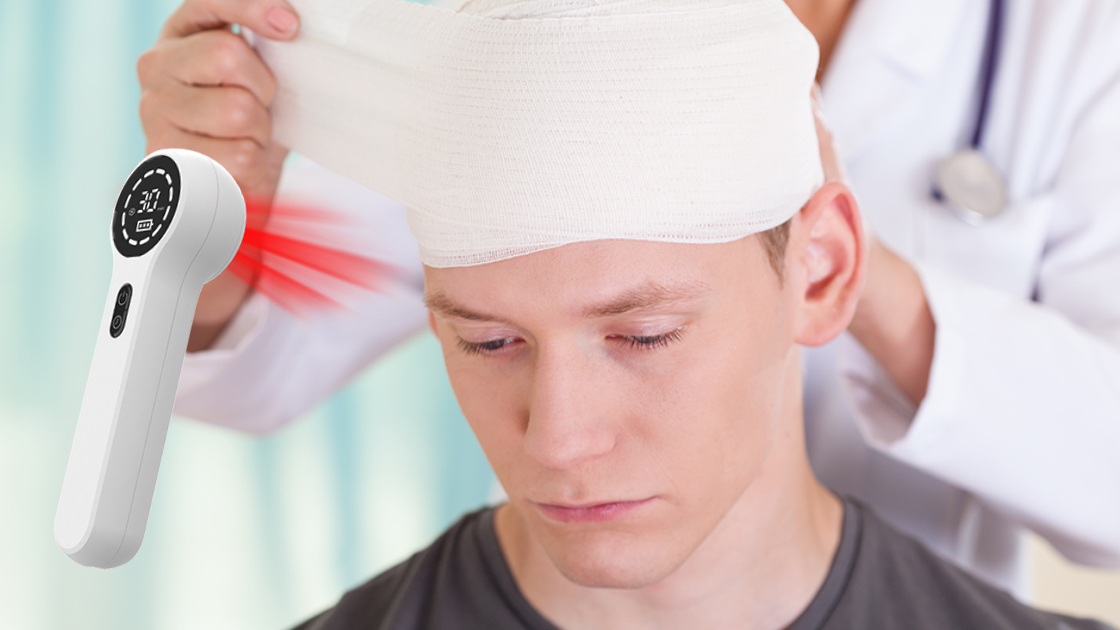Page Contents
Traumatic Brain Injury (TBI) often acts as an invisible wound, affecting not just the individual but also their families and communities. Each year, millions suffer from TBIs due to falls, sports injuries, and accidents. The consequences extend beyond physical symptoms, leading to cognitive, emotional, and behavioral challenges. While traditional treatments help many, laser therapy offers new hope, lighting the path to TBI recovery in unexpected ways.
The Hidden Impact of Traumatic Brain Injury (TBI)
TBI results from various forms of trauma and causes a wide range of symptoms that can disrupt daily life. Survivors often struggle with memory loss, attention deficits, and processing delays. Emotionally, they may face mood swings, depression, and anxiety, which can strain relationships and hinder social interactions. Families often feel helpless as they navigate the complexities of their loved one’s changed abilities. Personal stories from TBI survivors highlight the significant impact these injuries have on everyday life, emphasizing the urgent need for innovative treatment options.
Breaking Down Laser Therapy
Laser therapy uses focused light to promote healing at the cellular level. Unlike traditional methods that focus on managing symptoms, laser therapy stimulates cellular processes crucial for recovery. Medical professionals use various types of lasers, including low-level lasers (LLLT) and high-intensity lasers, each tailored to specific needs. Low-level laser therapy (LLLT) is especially promising for TBI, as it reduces inflammation, enhances blood flow, and speeds up healing.
Laser therapy works by having light absorbed by cell components, which boosts energy production in the form of ATP (adenosine triphosphate). This increase in cellular energy accelerates healing, making laser therapy an effective choice for TBI recovery.
Laser Therapy: A Revolutionary Approach to Neuroprotection
Laser therapy stands out for its ability to enhance neuroprotection and promote neuroplasticity—the brain’s ability to adapt and reorganize itself. By stimulating brain cells, laser therapy helps revive damaged tissues and encourage healing. Increased blood flow reduces inflammation and delivers vital nutrients to injured areas, facilitating faster recovery.
Studies show that laser therapy can boost the release of neurotrophic factors, essential for brain repair and regeneration. This stimulation leads to significant improvements in cognitive function, memory, and overall brain health. The implications for TBI recovery are profound, offering new hope to those affected by brain injuries.
Combining Laser Therapy with Cutting-Edge Techniques
The potential of laser therapy expands significantly when combined with the innovative PowerCure product. This advanced device enhances the effectiveness of laser therapy by integrating multiple therapeutic modalities into a single treatment. PowerCure utilizes a variety of frequencies and wavelengths, allowing it to target specific tissues more effectively. This versatility promotes deeper healing and reduces inflammation, offering benefits that traditional therapy alone might not achieve.
By incorporating PowerCure into treatment plans, healthcare providers can create a more comprehensive recovery strategy for patients with traumatic brain injury. This device not only enhances the healing process but also accelerates recovery, making it an invaluable tool in modern rehabilitation. By focusing on laser therapy of PowerCure, healthcare professionals can improve outcomes for TBI patients, providing them with a more effective and holistic approach to recovery. This innovative integration supports both physical and cognitive healing, empowering patients to regain their strength and function.
Empowering Recovery: Patient-Centric Approaches and Resources
Empowering TBI patients requires access to innovative therapies and supportive resources. Patients and their families must become informed advocates for their recovery. Support groups, online resources, and educational programs play vital roles in helping them navigate their healing journeys. Connecting with others who share similar experiences fosters a sense of community and hope, helping combat the isolation often felt after a TBI.
Healthcare professionals should prioritize patient-centered approaches, tailoring treatment plans to individual needs. Open communication between patients, families, and providers builds trust and understanding. By emphasizing holistic care, including mental health support and physical rehabilitation, we can create a more supportive environment for TBI recovery.
Conclusion: A New Horizon for TBI Recovery
As we continue to explore the potential of laser therapy for TBI, we stand on the brink of a new horizon in recovery. Ongoing research and technological advancements promise a brighter future for those affected by traumatic brain injuries. By embracing these innovative treatments and prioritizing patient-centered approaches, we can illuminate the path to recovery, empowering individuals to reclaim their lives and thrive.
